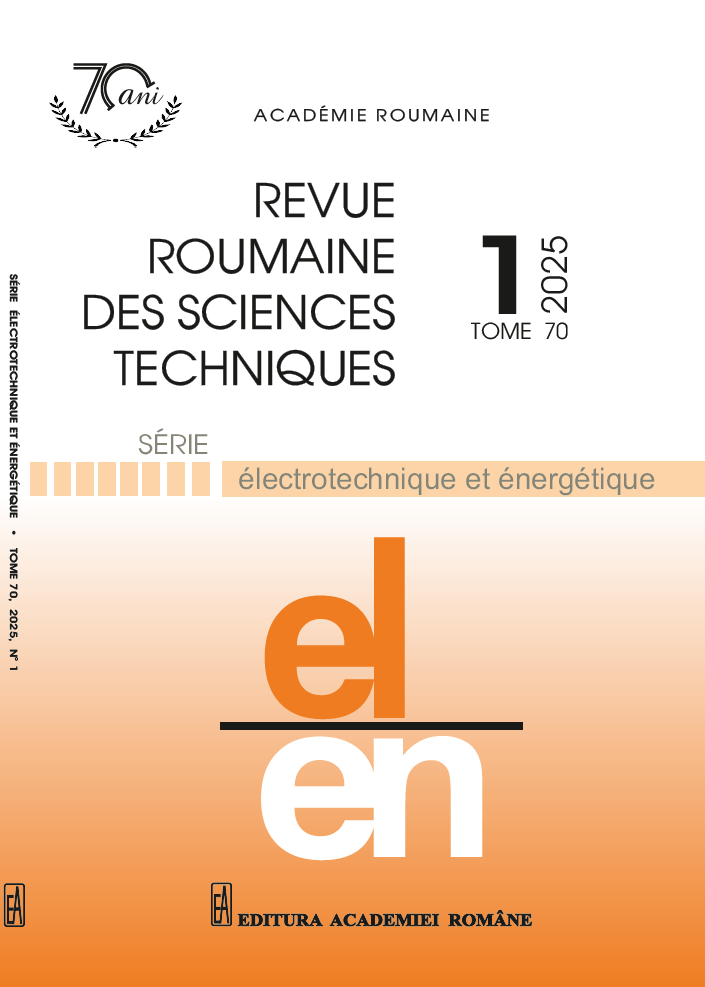NEXT LOCATION PREDICTION VIA DEEP LEARNING SQUEEZE AND EXCITATION BIDIRECTIONAL GATED RECURRENT UNIT
DOI:
https://doi.org/10.59277/RRST-EE.2025.1.20Keywords:
Deep learning, Next location prediction, Squeeze and excitation, AccuracyAbstract
Next location prediction has recently attracted much attention from researchers due to its application in various domains. Many variables usually affect moving objects, including time, distance, and user configuration. This makes it difficult to predict where moving items will go when these factors are considered. This research proposes a deep learning-based next-location prediction network (DL-NLocP) to increase the accuracy of next-location prediction. Initially, the datasets are pre-processed to enhance the data quality and employ term frequency-inverse document frequency (TF-IDF) with glove word embedding approaches to convert the textual data into real-valued vectors. Afterward, multi-head CNN extracts the vector data's temporal, location, and user behavior features. Finally, squeeze and excitation with the BiGRU network are developed to predict the following location in each trajectory with contextual information. The proposed DL-NLPN model was tested on the Ningbo AIS and Geolife dataset, and experimental results supported the model's validity. The proposed model consistently outperforms current state-of-the-art approaches by 93.75 % for Geolife and 94.75 % for Ningbo AIS on average accuracy@20. The results show that the proposed approach performs better in Next location prediction than the existing methods.
References
(1) Y. Xiao, Q. Nian, Vehicle location prediction based on spatiotemporal feature transformation and hybrid LSTM neural network, Information, 11, 2, pp. 84 (2020).
(2) J.P. Singh, Y.K. Dwivedi, N.P. Rana, A. Kumar, K.K. Kapoor, Event classification and location prediction from tweets during disasters, Annals of Operations Research, 283, pp.737-757 (2019).
(3) D. Yao, C. Zhang, J. Huang, J. Bi, Serm: A recurrent model for next location prediction in semantic trajectories, ACM on Conference on Information and Knowledge Management, pp. 2411-2414 (2017).
(4) S. Kumar, M.I. Nezhurina, An ensemble classification approach for prediction of user’s next location based on Twitter data, Journal of Ambient Intelligence and Humanized Computing, 10, pp.4503-4513 (2019).
(5) K.R. Seelam, V.A. Reddy, N. Arpitha, Location prediction on Twitter using machine learning, Journal of Engineering Sciences, 14, 01 (2023).
(6) H. Li, B. Wang, F. Xia, X. Zhai, S. Zhu, Y. Xu, PG^2 Net: personalized and group preferences guided network for next place prediction (2021).
(7) P.J. Shermila, A. Ahilan, A.J.G. Malar, R. Jothin, MDEEPFIC: food item classification with calorie calculation using modified dragon fly deep learning network., Journal of Intelligent & Fuzzy Systems, (Preprint), pp.1-12.
(8) J. Lv, Q. Sun, Q. Li, L. Moreira-Matias, Multi-scale and multi-scope convolutional neural networks for destination prediction of trajectories, IEEE Transactions on Intelligent Transportation Systems, 21, 8, pp.3184-3195 (2019).
(9) A. Agasthian, Rajendra Pamula, L.A. Kumaraswamidhas, Integration of monitoring and security based deep learning network for wind turbine system, International Journal of System Design and Computing, 1, 1, pp. 11-17, (2023).
(10) M. Luca, L. Pappalardo, B. Lepri, G. Barlacchi, Trajectory test-train overlap in next-location prediction datasets, Machine Learning, pp.1-38 (2023).
(11) A. Sassi, M. Brahimi, W. Bechkit, A. Bachir, Location embedding and deep convolutional neural networks for next location prediction. IEEE 44th LCN symposium on emerging topics in networking (LCN symposium), IEEE. pp. 149-157 (2019).
(12) R. Zhang, J. Guo, H. Jiang, P. Xie, C. Wang, Multi-task learning for location prediction with deep multi-model ensembles, IEEE 21st International Conference on High-Performance Computing and Communications; IEEE 17th International Conference on Smart City; IEEE 5th International Conference on Data Science and Systems (HPCC/SmartCity/DSS), pp. 1093-1100 (2019).
(13) T. Qian, F. Wang, Y. Xu, Y. Jiang, T. Sun, Y. Yu, CABIN: a novel cooperative attention based location prediction network using internal-external trajectory dependencies: Springer International Publishing, pp. 521-532 (2020).
(14) X. Zhang, B. Li, C. Song, Z. Huang, Y. Li, SASRM: a semantic and attention spatio-temporal recurrent model for next location prediction. International Joint Conference on Neural Networks (IJCNN) IEEE. pp. 1-8 (2020).
(15) S. Wang, A. Li, S. Xie, W. Li, B. Wang, S. Yao, M. Asif, A spatial-temporal self-attention network (STSAN) for location prediction. Complexity, pp.1-13 (2021).
(16) N. Rathore, N.L. Panwar, F. Yettou, A. Gama, Estimation and mapping of linke turbidity factor from solar radiation measurement for Indian climatic conditions, Revue Roumaine Des Sciences Techniques—Série Électrotechnique Et Énergétique, 66, 4, pp. 285-294 (2021).
(17) Dobre, A.M. Ilie-Sandoiu, A.M. Morega, E. Gheorghiu, Magnetic field control in an analytic platform for assessment of pathogenic bacteria, Revue Roumaine Des Sciences Techniques—Série Électrotechnique Et Énergétique, 68, 3, pp. 317-322 (2023).
Downloads
Published
Issue
Section
License
Copyright (c) 2025 REVUE ROUMAINE DES SCIENCES TECHNIQUES — SÉRIE ÉLECTROTECHNIQUE ET ÉNERGÉTIQUE

This work is licensed under a Creative Commons Attribution-NonCommercial-NoDerivatives 4.0 International License.


